“this coffee falls into your stomach, and straightaway there is a general commotion. Ideas begin to move like the battalions of the Grand Army of the battlefield,” wrote the great French novelist, ____. “Things remembered arrive at full gallop, ensuing to the wind. The light cavalry of comparisons deliver a magnificent deploying charge… Smiles arise, the paper is covered with ink; for the struggle commences and is concluded with torrents of black water...”
Honore de Balzac
“Whoever does not visit Paris regularly will never really be elegant.”
-Honoré de Balzac
“In Paris they simply stared when I spoke to them in French; I never did succeed in making those idiots understand their own language”
Mark Twain, The Innocents Abroad
Reading Time: ~15 min
I WRAPPED MY HANDS AROUND THE HOT PORCELAIN MUG and pulled my face into the path of its steam. The warmth was a welcomed contrast to the brisk bar air and the coffeed scent provided refuge, displacing the stale smell of dried wine with the richness of foamed milk and espresso. With my face hovering there, I inhaled slowly and closed my eyes. A sense of wonder sent currents through me, causing that hair-standing energy wave to flow down my neck. There, toggling between warming inhales and cooling exhales, with my eyes soft, but alert, I scanned the French bar.
There’s something inspiring about a warm morning coffee; something hopeful. Not just from the caffeine— that amphetaminic high needs little explanation. I mean pre-sip, just holding the cup in your hands. The smell is intoxicating and, along with the warmth, portends a certain optimism. Especially in the quiet stillness of an early morning like this one, just after sunrise, when there are no sounds or movements, and all you have is the coffee and your dreams—dreams which are, it seems, recalled in the anticipation, and then fanned, fancifully, the minute the caffeine hits your belly.
Across the cherry-wood countertop, sat a few other patrons. They were all older, Parisian men clad in their characteristic thin black boots and silk scarves of purples and blues, stirring tiny shots of espresso. As usual, this made me feel self-conscious. It was apparent to us all that my old jeans and sneakers were pitifully unworthy of French elegance. The bar was being unenthusiastically wiped down by a tall, wiry barista, his waxing movements far short of Mr. Miagi’s grade. By the looks of his blunted movement and baggy eyes, I bet he’d doubled as the bartender a few hours prior. And by the looks of his pony-tailed brown hair and handsome, rustic face, I bet he didn’t leave the bar alone.
Apparently Hemingway worked in bars like this one, though I can’t imagine why. Perhaps there didn’t exist warm, cozy places in the 20s. Maybe he didn’t work well in them. But it’s hard to imagine preferring this place—the bare furniture, the sticky, stale beer-soaked floors— it was like working in your local Irish pub, but colder. The walls seemed to have captured the night’s chill, holding it hostage until the sun deployed enough heat to negotiate its release. But, uninhabitable as it was, it was also the only place open in Le Marais at 7am on a Sunday morning.
I took out my notebook and pen and glanced out the window. The yellow rays were just starting to yawn their arms over the horizon. It would still be a couple hours before the city warmed up. I quickly tightened my scarf before restoring my grasp on my cappuccino, anticipating the day to come, and sank into my writing.
AT THE END OF my journal session, as is my custom, I listed the activities of the day:
- By 9:30 AM, I was to be at the western gate of the Tuileries— those colorful gardens that abut the west end of the Louvre. There I was meeting an AirBnB tutor for a 2-hour french lesson and leisurely stroll.
- After that, I had lunch open and I was tentatively scheduled to meet a friend of a friend who was expecting me to deliver to him a ‘package’— a prospect that made me feel (undeservedly) daring.
- The afternoon was left open for exploration until the evening time when I was expecting a visitor— a British friend with whom I’d developed a unique, intermittent closeness.
At about 8:45 AM, the sun was well into the sky. I paid my bill and headed southwest towards the Louvre.
The Tulieries
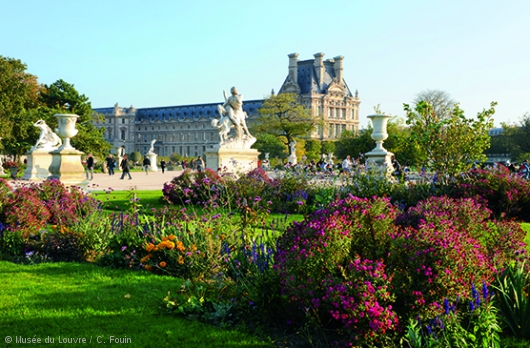
PASSING THE FAMOUS GLASS PRISM that juts through the ground at the Louvre, you’re eyes wander, scanning the distance for the next monument on which to rest. If that scan tracks westward about 1.2 KM (.75 mi), it’ll lead you to the 27 meter-high (75 foot) obelisk at Place de la Concorde. In between here and there is all greenery, usually buzzing with people at any hour of a dry day. That flowered greenery is called the Tulierie Garden.
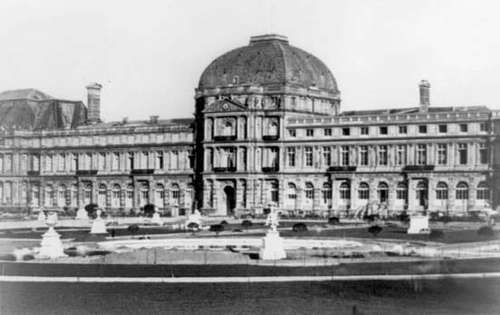
The Tulierie Garden was commissioned by Catherine de Medici, the Renaissance era French queen who was arguably the most powerful person in all of Europe in the 16th century. It was originally the garden to the Tuileries Palace, but that was burned around the time of the Paris Commune— a radical uprising in response to Napoleon III’s surrender to the Prussians and Otto Von Bismarck in the late 19th century. Following the Commune, the gardens continued on as the public amenity they are today.
If you begin at the Louvre and walk westward through the Tulieries, you’ll hit the Place de la Concorde. Continue and you’ll walk directly down the Avenue de Champs-Elysées, through the Arc de Triomphe— the “The Triumphal Arc of the Star”— located at Place de Charles de Gaulle. The Arc is the primary monument in the “Axe historique” (the historic axis)— the sequence of famous monuments starting at the Louvre, ending at the Grande Arche de la Defense. (The “Star” refers to where the Arc is located— at the intersection of many avenues).
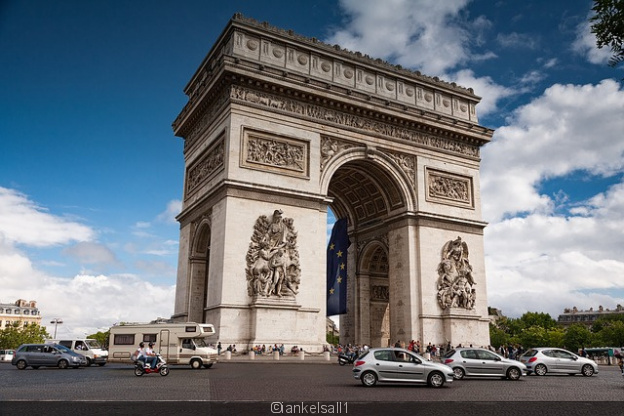
The Arc de Triomphe is the most famous commemoration of those that fought the French Revolution and the Napoleonic Wars. It was commissioned in 1806 by Bonaparte himself. Hardly surprising for The Little Corporal who, though widely regarded as a war genius, is rarely accused of being a humble one.
I REACHED THE WESTERN gate of the Tulieries just after 9:30am, and thus continuing my uncommon streak of tardiness. I’ve decided to blame this on the Paris and its obvious encouragement to walk slow and its overpopulation of interesting things to look at. Mindful that I was running behind, I hardly got a chance to appreciate the great Gardens— a missed opportunity that, luckily, I would soon have the chance to rectify. To find my Airbnb-hired French tutor, I used What’sApp— the official communication tool for everyone outside of the States. Coordinating on current location and appearance, I eventually found Christine.
She was beautiful in that very French way, with an elegance and a style and a grace that isn’t trying to impress anyone, but exists there, effortlessly, just because that’s the way things are. She was probably in her late 30s or early 40s, with an air of someone who had traveled over the years with a Beatnik’s abandon. I am not sure if she was single, but she didn’t seem married, causing less-than-admirable intentions to spring up in my testosteronic body.
Soon the other student joined us, an American, Ali. We exchanged awkward hellos, and then Christine gave us each a little French reference guide. And, with everyone equipped and acquainted, we set off, sauntering back towards the Louvre—class in session.
The language learning started with re-introductions: Bonjour, je suis Justin; Bon Jour, je suis Ali. We said it was nice to meet one another (enchante)* and where we were from (je suis americain). At each exchange, we’d stop, until we got it right, and then we continued walking, often with Christine adding in a little anecdote about the gardens or French culture, and lacing in more french. Eventually, she would come to another phrase to teach, like where is the Louvre? [ou est le Louvre}— it’s over there [c’est par la}
*[NOTE: Evidence of French loveliness: In English, we say nice to meet you. The French say they are enchanted. Which would you rather hear?]
As the lesson went on, we learned numbers and questions, and we would use them on live people. So we’d go up to some guy selling some trinket and we’d be able to ask him how much (combien) and then say no merci. One guy, picking up the stink of our stuttered French, inferred the presence of tourists to trap. He followed us for about 50 yards, continuing to show us products and once-in-a-lifetime prices, as we politely declined. Persistent, these french street merchants.
Towards the end of the lesson, we went into a café across the street and ordered our cafés, all in French, our proud teacher looking on. Then, also in (some) French, we told Christine where we were staying and what we were doing while in Paris. After about 15-20 minutes, all coffees finished, we thanked everyone and walked out towards the Louvre entrance on Rue de Rivoli. Lesson concluded.
Ali hugged Christine first, and thanked her as she walked off, westward towards the Place de Concorde. I hugged Christine as well, graciously accepting her email ‘in case I needed anything or had any questions about the city.’ The email became sort of a siren’s call, as I was fighting off the urge to propose a tryst with the wild and free instructor. But I never did.
It was now afternoon, and I had just about an hour to eat and walk the 30 minutes or so back to Le Marais to meet that friend of a friend for a beer. With that time, and given my current geography—within a macaroon’s throw to HEALING café— I eagerly set off to get my second ‘Buddha bowl’ of the trip. Ommmm. Ommmmmm.
My French Connection

HIS NAME WAS BLAISE. As in the English ‘blaze’— as in fire. Standing well over 6 feet, and with a name like that, all Blaise needed was about 10-15 more pounds of muscle and a spandex leotard, and he’d be manning the tennis-ball machine-gun, shooting at wanna-be American Gladiators on the obstacle course. But besides being a shoe-in for bar’s best name, he also had a thick French accent and a kind disposition. That made it pretty easy for me to block out my conscience and complete the drug transaction for which we had met.

Now, some may say that I am overblowing this calling it a ‘drug transaction’— my friend had given me two prescription pills to bring to Blaise, which were his in the first place— but I say the realness of drug deals are in the eye (and rising pulse) of the dealer. Carrying around the two blue(?) pills amidst my pink B12s, I don’t care what you say, I was George Jung from Blow (‘May the sun shine on your face’). Every time I took a B12 I shuddered over the idea of mistakenly taking an aderol. What I was afraid of, I’m not sure. Being overly productive?
Anyway, with business handled, we had a beer and we talked about my trip so far and what I was going to do. I came in hoping to get from Blaise a few recommendations —which he provided. But in addition to the practical, he gave me a second gift which completely changed the course of my trip for the better.
First, the practical / experiential. He told me about where to go —the Pere Lachaise Cemetery (which I’ll tell you about later), a restaurant or two and a few lesser-known museums and exhibits in the 19th and 20th arrondissements. I would eventually go to most of them.
The second gift was unexpected. After we ordered— him a steak and IPA, me a veggie soup and what they call in Scotland a ‘lady lager’– Blaise shared an idea with me. I can’t go, he told me, but I have this friend, her and her boyfriend are heading to Pompidou to see a Japanese architecture exhibit. You should go. I was a little hesitant. Wait, do they speak English? Blaise was already dialing up Sara. Umm… a little bit.
Blaise got on the phone and I admired their French banter. It always seemed so warm. Do the French have closer connections to their friends? Are their relationships richer, better nourished? It sure seemed so by the tone with which they acknowledged one another. I became envious.
She’s going to call me back. I told her to get her butt over here first to meet my good friend and take him to the museum. Wait, she doesn’t need to come here if she’s busy, I protested. I don’t know if I’m even gonna go— Her call interrupted me. She’s on her way!
SARA AND RAJIV ARE the type of couple that make an impression right when they walk in the room. You don’t even really need to be looking right at them, or clearly make out their faces to be impressed. They have the kind of look, the kind of energy and style, that is obviously attractive, even in a blur.
Sara’s face is tan and soft-seeming with warm, brown eyes that match her hair. She appears more Mediterranean than French to me (as did Rajiv), a guess that turned out to be somewhat accurate (she’s part Italian and Colombian, I think). She has that endearing, comfortable type of look that seems to require no further assembly— she just wakes up, and she is Woman. You have the sense that her elegance and simplicity have maximum range, equally attractive at a wedding or a workout. Speaking of workouts, she was also, I was later to learn, a tomboy— a woman after my own heart.
It seems the foreign origins of Rajiv and Sara are not the exception in Paris, but the rule. Like many of the people that come to mind when I think of Paris— Camus, Napoleon, Picasso, The Lost Generation—you aren’t born a Parisian, as the saying goes, you become one.
Rajiv has piercing, dark features and nearly equals Sara in prettiness. He has the kind of bushy, black-gray beard, which, if not perfectly paired with GQish hair and leathery, fitted clothing, could be mistaken for an unkemptness. But kempt he most certainly is. In fact, as I’d later learn, the very thought of unkemptness would disturb him mightily. He’s the type of guy with such a spotless, sleek apartment that a guest’s immediate shoe removal upon entrance need not be requested— it is implied. You look around and marvel at the artful balance of edge and put-together-ness, and wonder, not being artsy yourself, how it is that some guys envision this kind of interior design. A stark contrast to my own decorative sensibility known by some as “dorm-room sheik.”
As soon as they walked in they greeted Blaise with the double kiss and the genuine warmth that I’ve found to be so common in southwestern Europe. Blaise introduced me, and somehow, they conjured up a greeting with energy approaching the same. I felt as if they were really were happy to meet me.
We ordered them a beers, and we cheersed, and briefly got to know each other. And after giving them my who-what-where spiel, and determining that there was at least a threshold of English where we could communicate, we headed for the Pompidou museum.
The Centre Pompidou and Ando Tadao
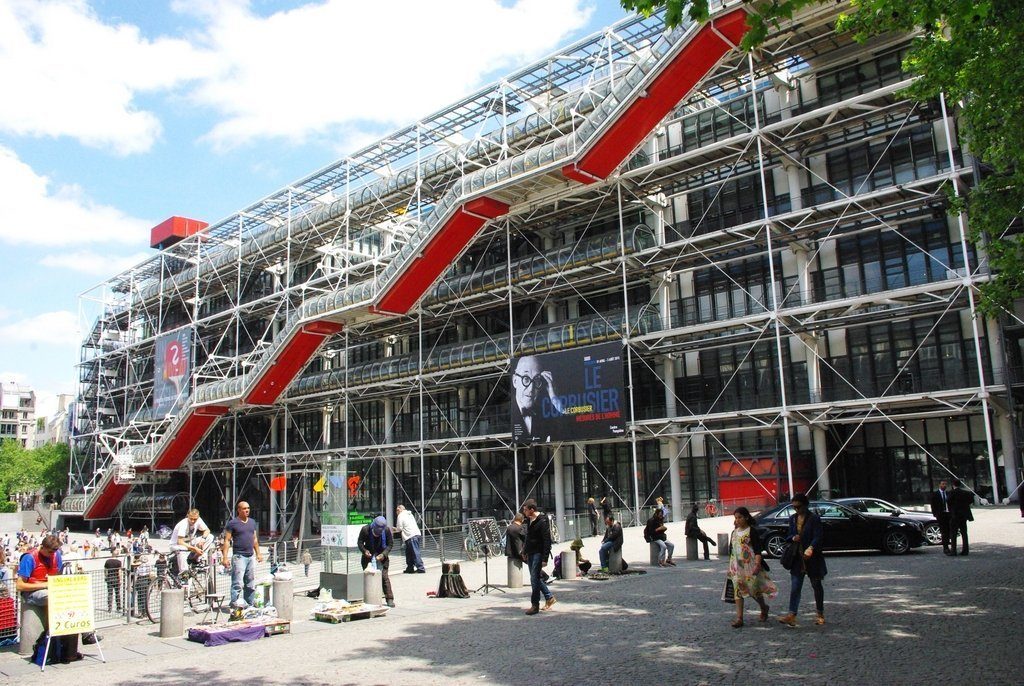
APPARENTLY, THE KEY THING TO KNOW ABOUT THE POMPIDOU CENTER, which turned out to be one of my favorite museums in Paris, all lies in understanding the character of its namesake and key proponent, former French president, Georges Pompidou. He was a man looking to bridge the gap from the new Parisian cultural progressives and the old conservatism. To push the envelope, Pompidou even selected two foreign, largely unknown architects to design the Centre, much to the outrange of Parisian purists.
Although It was to include things like a massive public library and the biggest museum of contemporary art in Europe, it was still something of a nuisance to the traditional French intelligencia when it was commissioned in the 1970s. An article at the time claimed that Paris had “its own Monster, just like the one in Loch Ness.” La Monde declared it the ‘rape of Paris.’ The opposition was two-fold: one due to its intention of a ‘mixed culture, multi-disciplinary center’ and other due to its inside-out, exposed design. NPR, in this historical look, described it as a “jumble of giant, colored pipes with an escalator in a clear plastic tube zigzagging up its side.”
But as seems to happen with all avant gardish ideas, at first there was great resistance, but once the incumbents died off, the reception turned a corner. “The difficulty lies not so much in developing new ideas,” Keynes famously said, “but in escaping old ones.”
There was a queue when we arrived, so we grabbed our tickets and got in line. As we waited, I got to learn more about the handsome couple. They both work at some trendy brand that I forget the name of (my fashion sense is low). It was very fitting of their look, I thought— cool, sleek, not trying to be too much (or maybe it’s not trying to look like they’re trying to be too much). Rajiv holds the higher post, managing sales for a large team in Europe, more or less Sara’s boss, I think. So that’s how he got her! It’s kinda hard to beat that dashing, rustic, fair-but-firm, position-of-authority look.
By the time we got through the line and were headed up the escalator to the Tadao exhibit, we were already making jokes. I was saying how much I liked the French slang I was learning. A personal favorite being the French version of ‘yep.’ Instead of oui, which sounds like ‘we,’ they often less-formally say oue, like ‘wey.’ So whenever two youngish Frenchies were on the phone, the whole conversation would be “wey, wey, wey.” As a result, whenever they said anything to me, I’d respond like broken record— wey, wey, wey.
We summited the escalator and stepped off right into the beginning of the exhibit. I knew nothing about this guy, Tadao, but I’ve had a quite obsession with things Japanese ever since Tom Cruise’s performance in The Last Samurai. In fact, I want my future house to be a mix between Japanese garden, 1920s swing jazz, and beachy, ski cabin. Currently seeking applicants who actually knows what that means.
ANY TIME I AM IN AN ARCHITECTURE EXHIBIT, I feel compelled to make some sort of joke involving Art Deco versus Art Nouveau (btw, Art Deco is actually the ‘newer’ one). I blame this on Tucker from There’s Something About Marry. But Tadao Abdo is an architect worth looking into, even if you’re knowledge (and therefore interest) is lukewarm on the subject. Because while you may look at these buildings, understanding approximately nothing about technical skill, you still can get a strong sense of his primary objective— to make things within the specific character and history of their surroundings.
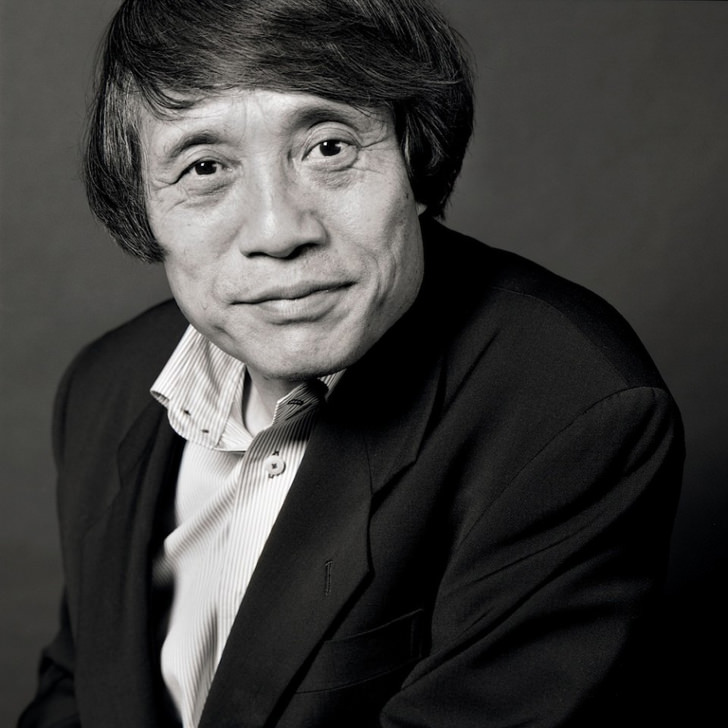
And this intention does not merely play out metaphorically. Tadao literally (dictionary definition, not millennial), constructs buildings into the physical ground of their surroundings. Take a look, for instance at the below, a the Buddha or building built into hills. Or my favorite, the Church with Light.
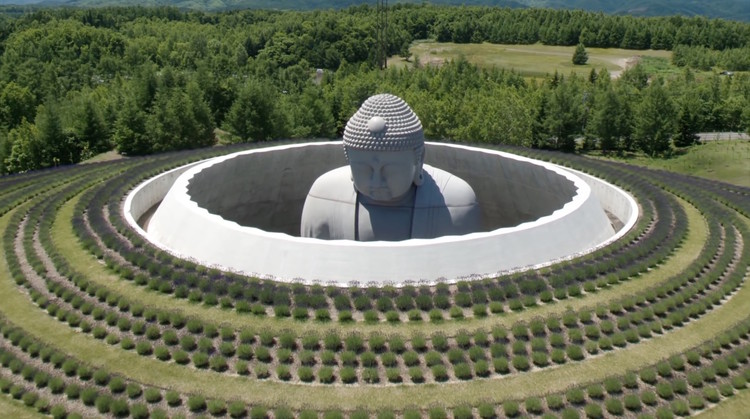
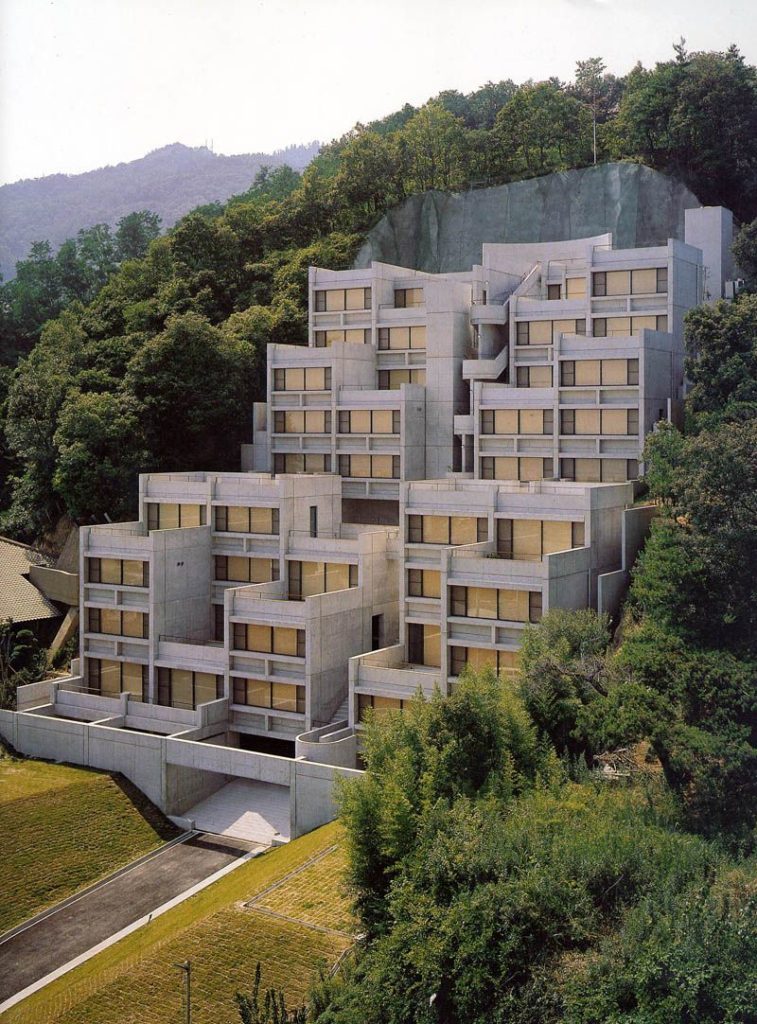
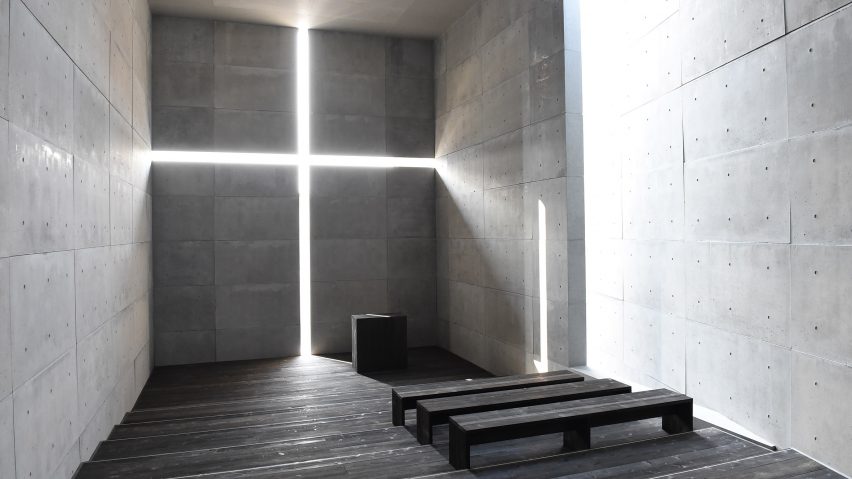
Now, I’m probably not religious in the literal (again, dictionary, not millennial) sense, but there is something about our desire to build churches and the resulting reverence in which we hold them. Even in the declared atheist or the humanist, I’ve seen this reverence echoed.
After jotting down some notes about Tadao, and walking around the 1500 square-foot exhibit for about an hour, it was time to go.
WHEN WE GOT OUTSIDE, the sun was shining and the air was cool and breezy— perfect autumn long-sleeve-and-jeans weather. A rush of excitement filled me as I quickly reflected on where I was and who I was with: I’m in the center of Paris, walking out of a museum characteristic of the rebellious-but-wise sentiment of the Enlightenment and Left-Bankers responsible for my Paris romance, walking with two warm and lovely Parisians with whom I hold the faintest of prior connections: friends of a friend of a friend.
I felt a sense of belonging. A sense that was enhanced when the couple insisted we hang out a few days later— an invite to the Louvre! And this feeling was only amplified once I realized that I still had an event to come that evening, a strange one for a foreigner to experience— I was welcoming a guest.
With only about 45 minutes until Sally would likely reach her hotel, and in need of a phone charge, I walked on air back to my flat.
To be continued…


One Comment on “Scenes From Paris III: French in the Tuileries, A Drug Deal, and My French Connection”
To quote the great Brittney Spears, ” Gimme gimme more, gimme more, gimme gimme more!”